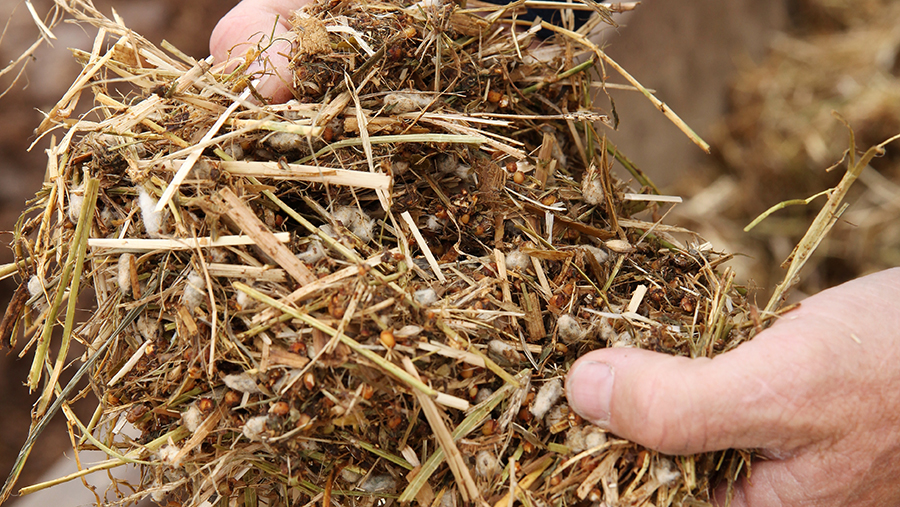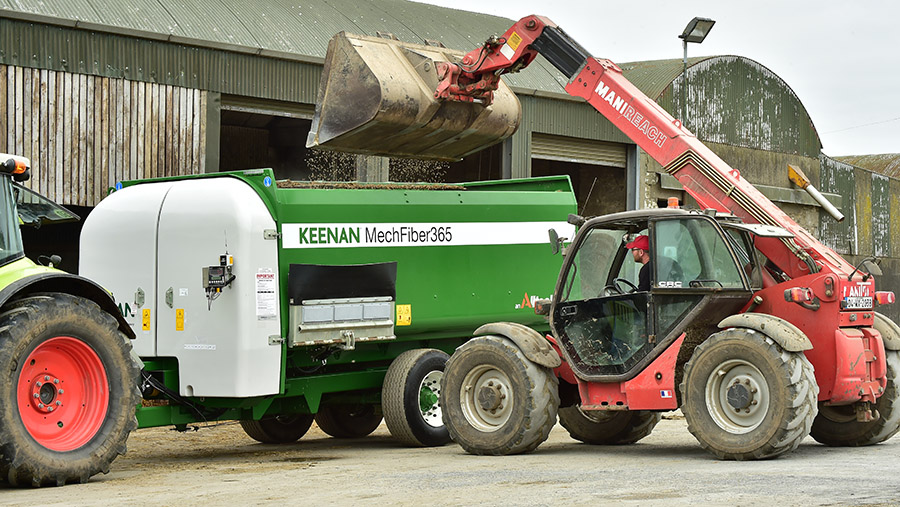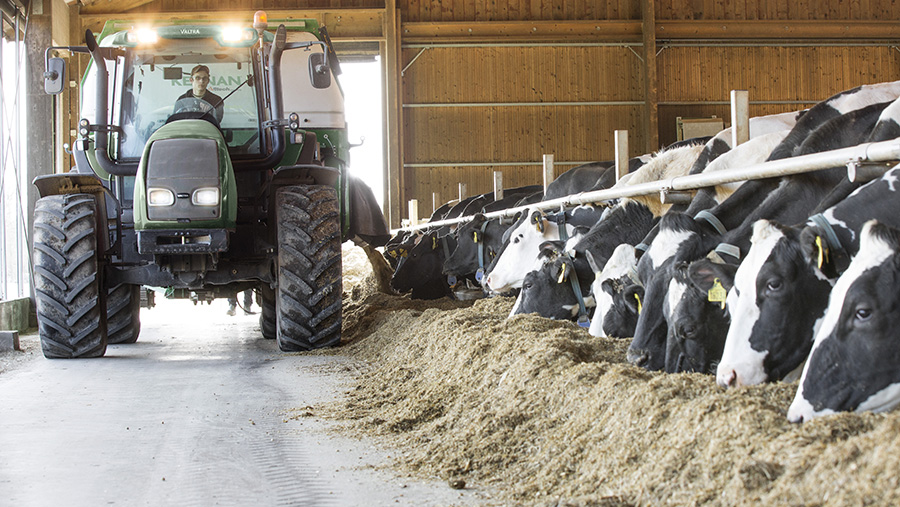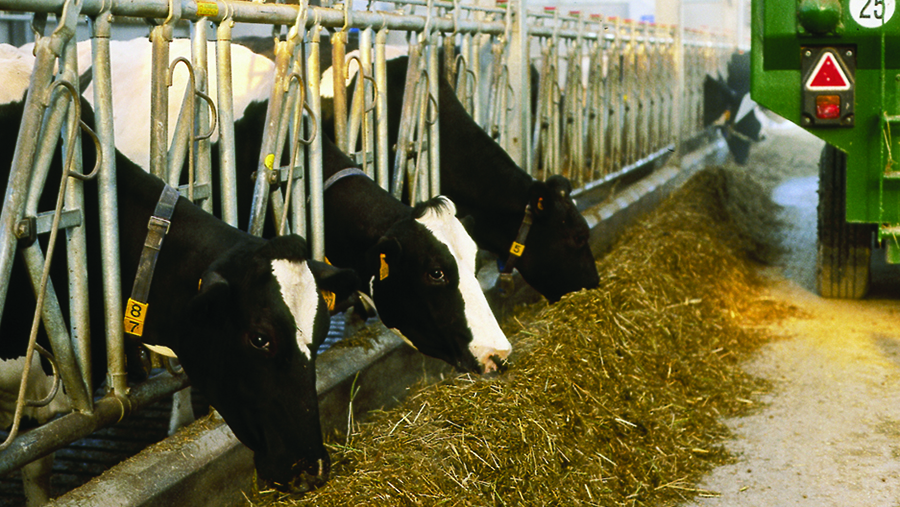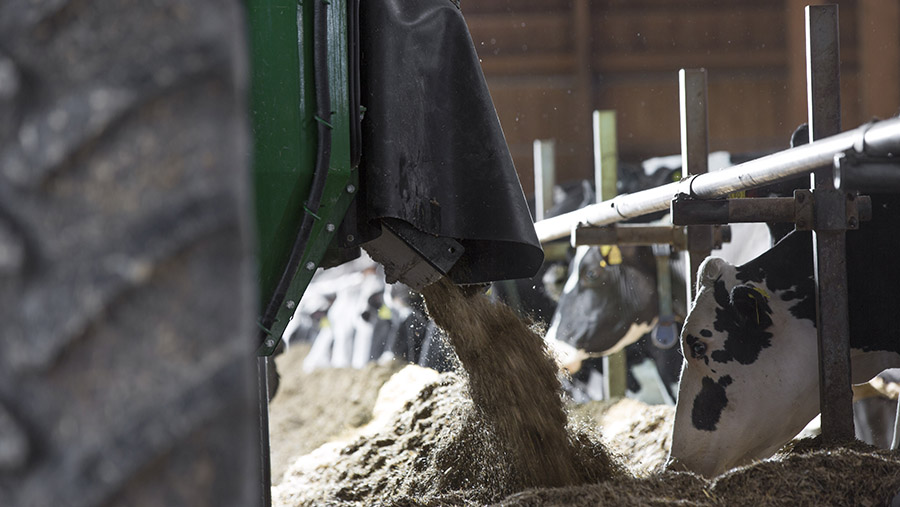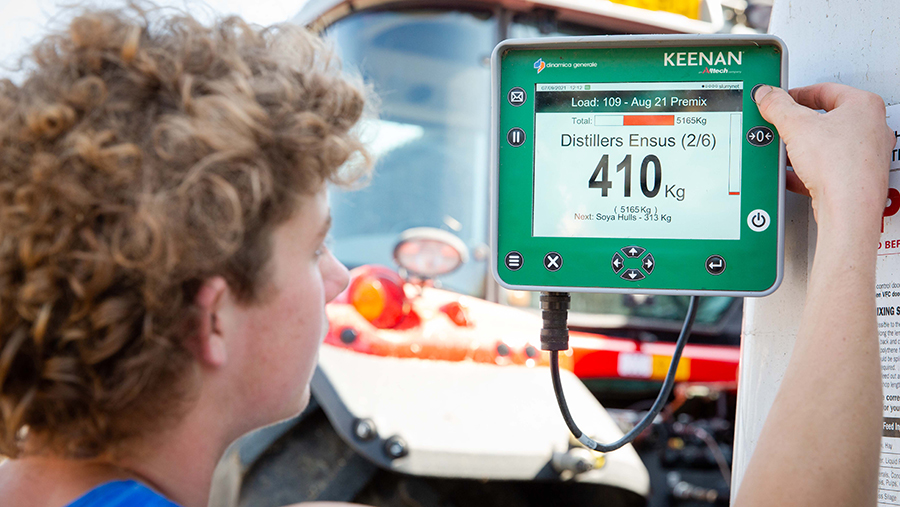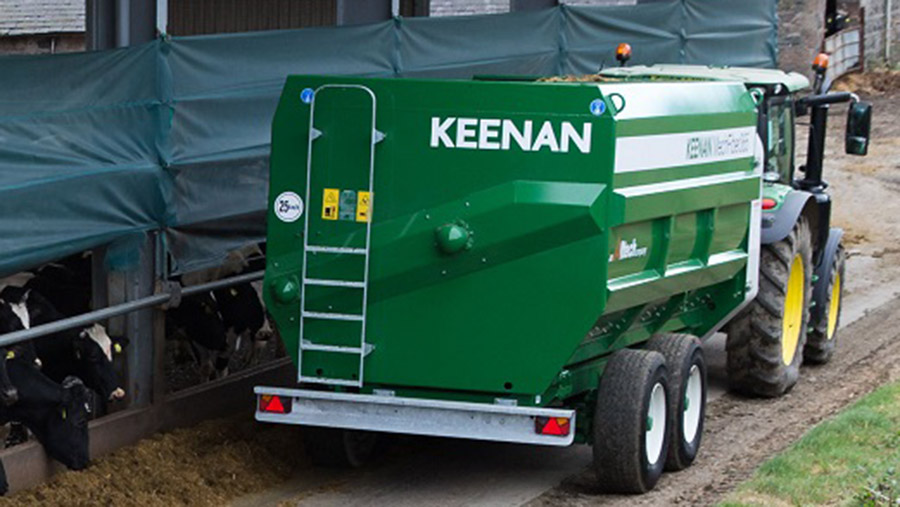Advertiser content
Mitigate rising feed costs through better mix quality
What’s your TMR costing you?
Our studies show that an accurately mixed TMR can lead to an average saving of £23,360* per year.
This will be influenced by factors including your diet feeder loading order and accuracy, mixing and feed-out but inaccurate mixing could be costing you up to 5 litres of milk per cow, per day.
With feed costs rising, it’s essential that your diet feeder is working as well as it possibly can. Regardless of the make or model of your diet feeder, there are several things you can do to make sure your ration is consistent day after day.
A fully functioning diet-feeder producing a consistent and good-quality daily ration helps to improve rumination, maintain a steady feed intake and supports the health of the herd. Aside from creating less waste, it improves feed efficiency and contributes to improved productivity.
One ration or five rations?
Your cows get one ration, right? In reality, they get five:
- The ration originally formulated by your nutritionist
- The ration loaded into your diet feeder
- The ration fed out from your diet feeder
- The ration eaten or left by the animals
- The ration passing through and wasted by the animals
Consistency is key
The concept of feeding total mixed ration (TMR) is now well established but delivering a consistent ration to all groups within the herd day after day, can be challenging for a number of reasons.
The following factors will have an impact on the accuracy of the ration eaten by the herd in relation to the diet originally formulated.
Capacity of diet feeder
Are you over-loading your diet feeder? The capacity of the diet feeder may not be adequate to integrate the full range and quantity of desired ingredients for all batch sizes.
Loading order
The type of diet feeder you use will determine the loading order of feed ingredients and mixing time. Incorrect loading and mixing will have an impact on the accuracy of the ration fed to the animals.
Condition of diet feeder
Is your diet feeder water-tight? Even the smallest of holes can affect the specification of the diet that is mixed and fed out, particularly if you are including liquid feed ingredients and water.
Is there paint wear inside the mixing chamber/tub? Are there dead spots where the feed ingredients aren’t being mixed?
How do you know when your ration is processed just right?
Your machine’s chopping mechanism will have a significant impact on the quality of mix produced. How often do you start your machine and go and deal with another job?
Under- or over-processed ration can result in variable feed intake, increased sorting and refusals and a lower feed conversion efficiency.
Over-processed ration tends to pass through the animal much more quickly than an optimally mixed ration meaning that the opportunity for energy absorption is reduced.
Under-processed rations tend to be sorted meaning the animal won’t get the intended ration. Using a dung sieve will identify the level of waste.
Standard operating procedures
On most farms there’s usually more than one person responsible for feeding.
Even some basic operating procedures for loading, mixing and feeding-out will help to reduce discrepancies between machine operators and errors in loading sequence, loading weights and mixing times all of which will impact on ration consistency.
Never under-estimate the difference between the way different operators will prepare a load of mix.
Find out how investing in technology helped to improve loading accuracy, mixing and ration management at Philip Hallhead’s Norbreck Farm home to Norbreck Genetics.
Dry matter measurement
How do you account for variations in dry matter? Consider regularly measuring forage dry matter to allow for fresh weight loading adjustments to the TMR as this is essential if you are to maintain a consistent forage to concentrate ratio.
Heat stress, spells of cold weather and ration presentation are some factors that can affect dry matter intake.
How even is the ration along the feed barrier?
Is the mix still consistent six hours later or has it been sorted by the animals?
Don’t wait until you see a change in the quality of your mix.
By the time you notice that your mix quality has reduced, herd output will have reduced too.
Regularly checking your diet feeder for signs of wear and tear, in addition to routine servicing will help to identify potential issues with mix quality and consistency before they arise and have an impact on herd output.
Worn or damaged components, if left unrepaired can prove costly to replace and inconvenient if the machine is out of action.
Diet feeder maintenance checklist
Weigh box: In order to feed the correct amount of ingredients, the weigh box needs to be working properly. Start with zeroing the system. Inspect the condition of the weigh bars, cables and sockets and run a test to confirm that everything weighs correctly. Run a calibration test on a regular basis with a 25kg bag of feed.
Hitch, chassis and drawbar: Check the condition of these components including pivots, springs, U-bolts and pins. Grease all smear points. If your machine is frequently manoeuvred in confined spaces and around tight corners with a full load, pay particular attention to the hitch.
Brakes, tyres and wheels: Check that brakes are engaging; check the condition of tyres, rims and wheel bearings and check that wheel nuts are tight. Don’t forget to check tyre pressures.
Driveline: Regularly check driveline componentry in accordance with your user manual.
Hydraulics: Check for leakages and carry out a test run. The design life of hydraulic hoses depends on the level of usage and wear and tear. They should be checked yearly and replaced about every 10 years.
Mixing chamber: Check for signs of wear, corrosion or damage to the belly/walls of the machine. Depending on the level of wear, it may be that the machine is actually costing you through poor mix quality.
Mix quality assurance: Check the condition of all cutting components including blades and paddle rubbers (type depending). Replace if necessary — these components have a significant impact on the mix quality.
Safety features: Regularly check protective devices and guards. Replace a worn PTO cover promptly and make sure it is tied and not spinning freely. If your machine will be towed on a public road ensure that lights and indicators are working correctly and the machine is road legal.
By having your machine checked and serviced regularly, you can ensure reliability and avoid any technical issues.
A correctly serviced machine will have a better chopping and mixing performance which will reduce fuel consumption, extend the machine’s working life and help to maintain the value of your machine, something that will be important if you decide to trade your machine in.
What’s the answer? The MechFiber difference.
The KEENAN diet feeder has a unique two-chamber system; a mixing chamber and a separate discharge chamber.
The two-chamber system together with the 6-paddle reel and our patented fixed knives system is how the MechFiber mix is produced – the open, fluffy mix that is unique to KEENAN.
The KEENAN controller and InTouch feed management app and dashboard provides oversight and control of all feeding data in real-time, at the touch of a button:
- Greater accuracy during loading, mixing and feed-out
- Rotation counter and auto-stop for an optimally mixed ration
- Prevent over and under mixing
- Manage feed inputs, diets, refusals and stock
- Track feed costs and accuracy
- Reduce waste
The KEENAN MechFiber paddle feeder was the first diet feeder in the world to be validated by the Carbon Trust for helping to reduce methane emissions on farm.
*Result of a one-year analysis of KEENAN and InTouch dairy farms, with an average herd size of 200 and is based on standardised feed costs and a milk price of 30p/l. Contact us for details.
Provided by
Established in 1978 and now a member of the Alltech family of companies, KEENAN is a respected leader in sustainable and profitable farming solutions, focussed on maximising feed efficiency.

